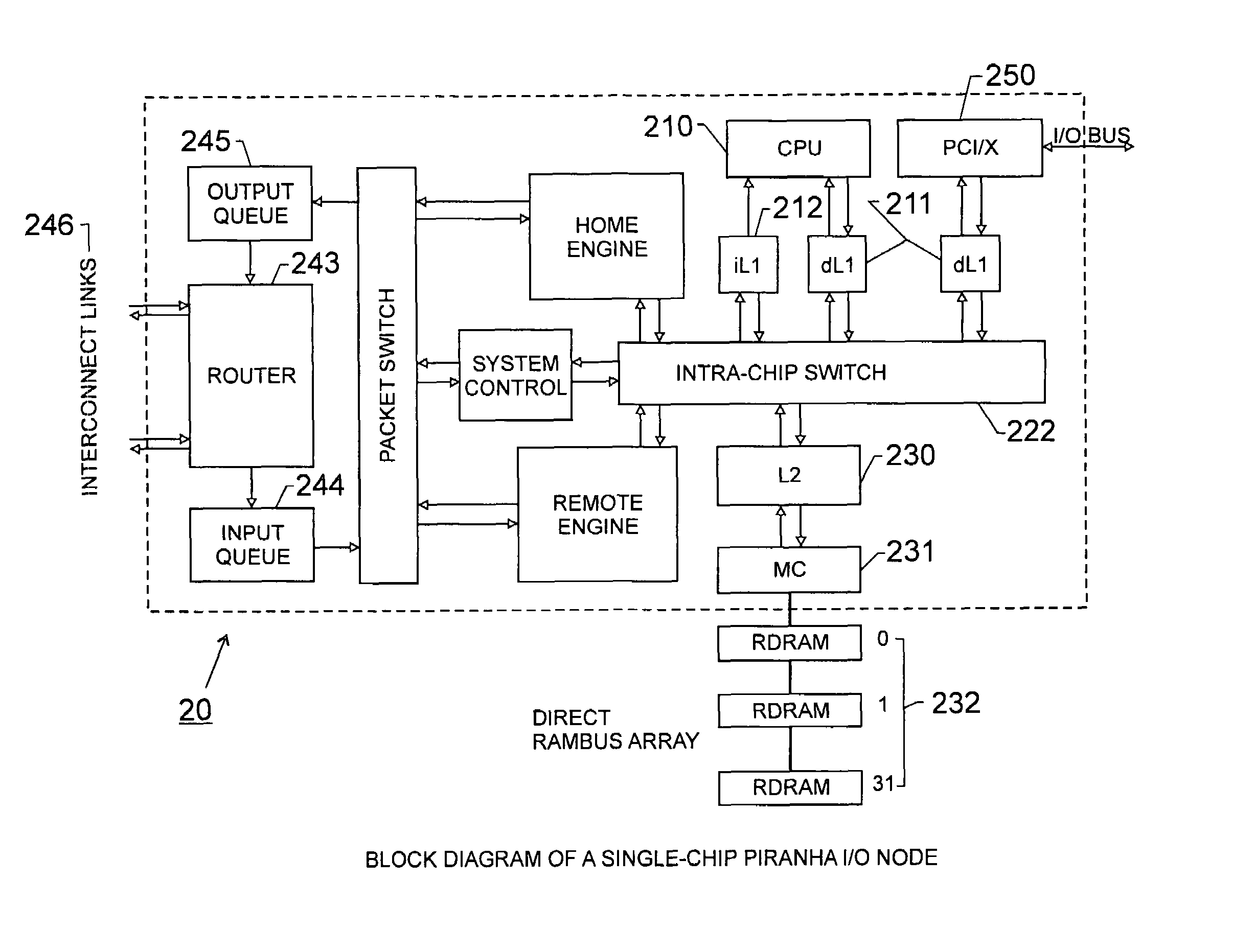Scalable architecture based on single-chip multiprocessing
a multi-processor, scalable technology, applied in the direction of data switching networks, memory adressing/allocation/relocation, instruments, etc., can solve the problems of high-end microprocessor designs that push the limits of instruction-level parallelism and speculative designs, and increase the development cost. , to achieve the effect of small team and investment, short tim
- Summary
- Abstract
- Description
- Claims
- Application Information
AI Technical Summary
Benefits of technology
Problems solved by technology
Method used
Image
Examples
Embodiment Construction
[0024]The present invention is related to multiprocessing design, and its main purpose is to achieve a system with superior performance on commercial workloads that requires a smaller design team, more modest investment and shorter design time. The design of a system with superior performance is especially targeted for commercial workloads such as on-line transaction processing (OLTP). To enable one of ordinary skill in the art to make and use the invention, the description of the invention is presented herein in the context of a patent application and its requirements. Although the invention will be described in accordance with the shown embodiments, one of ordinary skill in the art will readily recognize that there could be variations to the embodiments and those variations would be within the scope and spirit of the invention.
[0025]To achieve the foregoing and related objectives, the present invention is directed to a method for scalable chip-multiprocessing and a chip-multiproce...
PUM
 Login to View More
Login to View More Abstract
Description
Claims
Application Information
 Login to View More
Login to View More - R&D
- Intellectual Property
- Life Sciences
- Materials
- Tech Scout
- Unparalleled Data Quality
- Higher Quality Content
- 60% Fewer Hallucinations
Browse by: Latest US Patents, China's latest patents, Technical Efficacy Thesaurus, Application Domain, Technology Topic, Popular Technical Reports.
© 2025 PatSnap. All rights reserved.Legal|Privacy policy|Modern Slavery Act Transparency Statement|Sitemap|About US| Contact US: help@patsnap.com



